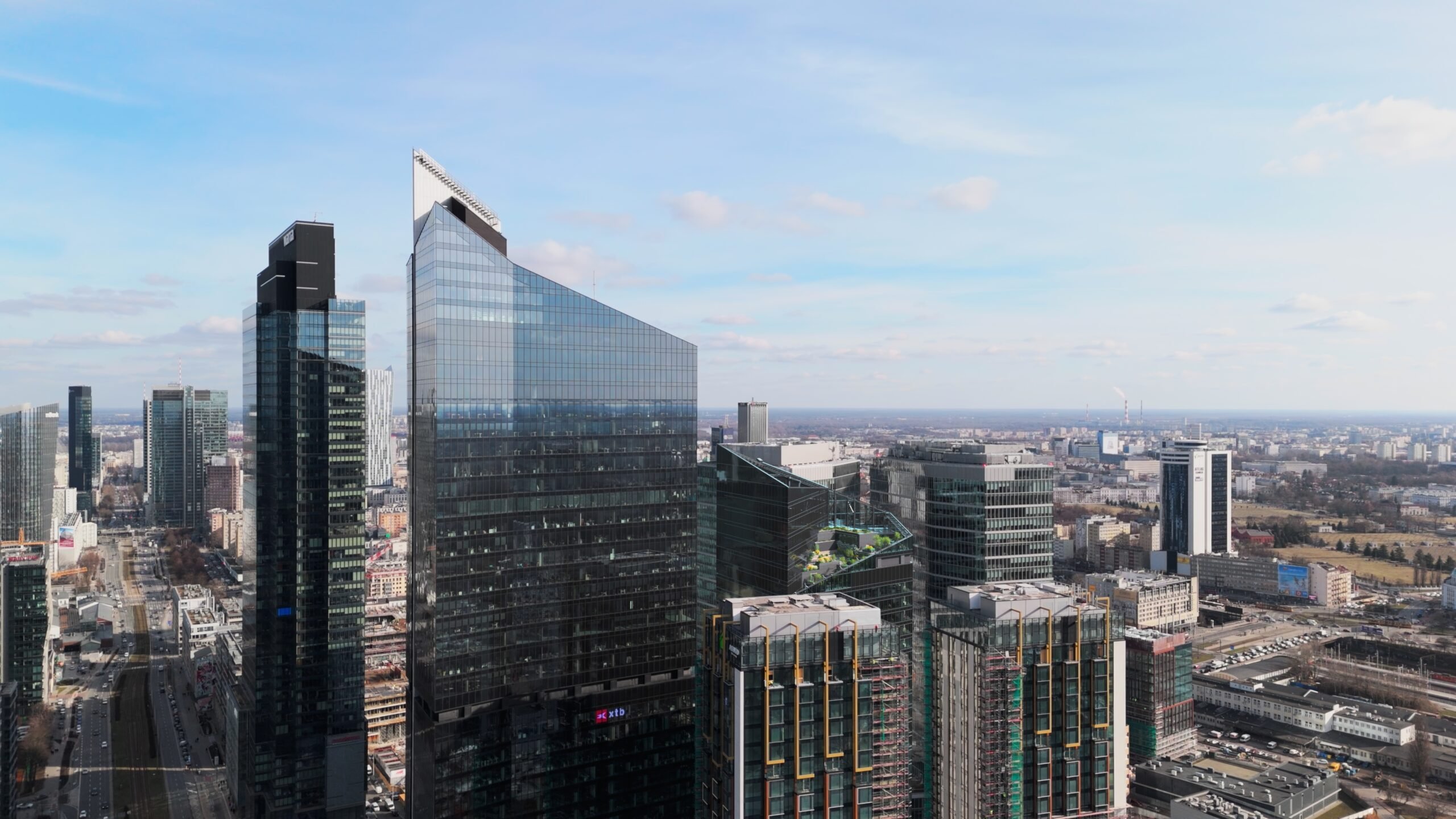The office market in Central and Eastern Europe (CEE) shows signs of solid growth and recovery, supported by the region’s strong economic fundamentals and rising investor confidence – according to the latest Office Market Landscape CEE Region report, published by JLL and iO Partners.
CEE’s economic outlook shows continued growth across the region, with most countries expected to maintain GDP expansion between 1.6 percent in Hungary to 4.0 percent in Serbia in 2025, significantly outpacing the Eurozone’s projected growth of 0.9 percent. This stable performance is primarily driven by strengthening domestic consumption, rising real earnings, and dynamic investment activity.
“Despite limited new supply, investment market dynamics are strengthening, and tenant demand is stabilizing – particularly in Prague, which recorded exceptionally strong annual results. Last year in Warsaw can also be considered successful. The tightening availability of high-quality office space, coupled with corporate efforts to encourage employees’ return to offices, is exerting upward pressure on prime rents. These market fundamentals indicate continued resilience despite global uncertainties,” says Mateusz Polkowski, Head of Research JLL Poland.
Strong Rebound in the Investment Market
Investors are once again focusing their attention on the CEE region. In 2024, the total value of office transactions in the EMEA region reached a volume of nearly €45 billion, which represented a 9 percent increase compared to 2023. The CEE region stood out due to its further improved dynamics, recording a 15 percent higher turnover compared to the 2023 result, with an even higher increase including M&A transactions. Poland and the Czech Republic were responsible for the vast majority of the turnover, with a noticeable increase in capital allocation and consistently high investor activity throughout the CEE region.
“We are seeing a clear increase in market liquidity and an improvement in investor sentiment. Expected interest rate cuts by the FED and the ECB should further stimulate transactions in 2025 and the following years. The investment recovery in the CEE region may be linked to the general promising economic growth in this region,” adds Marcin Sulewski, Head of Office Investment, JLL.
“The CEE office market continues to demonstrate remarkable resilience, with stabilizing demand, growing investor interest, and a clear trend toward rising prime rents amid limited new supply. As occupiers increasingly seek top-tier, ESG-compliant space, as vacancy decreases across the region, we expect further upward pressure on rents and a growing imbalance between demand and availability – particularly in key capital cities,” says Milan Kilik, Head of Office Agency Czechia at iO Partners.
CEE Office Market: Limited Supply and Rising Rents
The Central and Eastern European (CEE) office market is experiencing notable shifts. In 2024, the office stock in the six capitals of the region increased by 325,000 sqm, however, the number of new investments remains limited. Net demand for office space in the six CEE capitals amounted to 1.4 million sqm last year – of which 850,000 sqm is already under construction.
JLL experts forecast that in the coming years, the annual supply volume will reach only 250,000–300,000 sqm, which may lead to further rent increases for top-quality space. The largest increase was recorded in Bratislava (+11 percent year-on-year), as well as in Prague and Warsaw (approx. 7-8 percent).
Demand for office space is stabilizing, however, decision-making processes are taking longer: lease renewals remain an important option for many tenants, accounting for almost 50 percent of total market activity in the CEE region in 2024. This result has been recorded for the second year in a row.
An analysis of demand for office space in individual capitals of the CEE region in 2024 revealed diverse trends: Belgrade recorded a decrease in transaction volume with a simultaneous increase in rental rates, which was a consequence of a limited supply of Class A space and a growing interest from foreign tenants. Bratislava was characterized by a stable demand, close to the five-year average. Budapest observed an increase in demand, with lease renewals being the most common form of all noted transactions. Bucharest recorded a decrease in both gross and net demand. Prague stood out with an exceptionally high demand, significantly exceeding the average of the last five years. In Warsaw, the demand mainly focused on smaller office modules, up to 1,500 sqm, with a predominance of leases below 500 sqm.
Sectoral demand for office space in the CEE region is distributed as follows: technology 17 percent, banking and financial services 15 percent, professional services 13 percent, public sector 8 percent, pharmaceutical/medical 7 percent, retail/e-commerce 6 percent, manufacturing 5 percent, flexible space operators 4 percent, other 25 percent.
Vacancy Rate Decreases
The JLL and iO Partners report shows that the average vacancy rate in CEE capitals fell to 10.8 percent (data for Q4 2024), except Budapest, where it increased to 14.1 percent due to a significant volume of new supply. The lowest rate was recorded in Belgrade, where it reached 4.9 percent, and even 3 percent in Class A buildings. In Prague, the vacancy rate was low at 7.3 percent, while in Warsaw it reached 10.6 percent. Bratislava and Bucharest were characterized by vacancy rates of 12.6 percent and 11.8 percent, respectively.
The rent values for the best office spaces in the capitals of the CEE region in 2024 generally showed an upward trend, albeit at varying rates: the largest year-on-year increase was recorded in Bratislava (above 10 percent), significant increases also took place in Prague and Warsaw (around 7-8 percent), and the highest level of rents was observed in Prague (€30/sqm/month).
Trends on the Horizon: Rising Rents and Limited Supply
Three trends will be key In the coming years: low development activity, a gradual recovery in demand, and further rent growth.
Construction activity remains limited, which will translate into a further decrease in the level of new completions. It is estimated that in 2025-2026, the annual new supply in the six capitals of the CEE region will be approximately 250,000 – 300,000 sqm. This low-development activity is an important factor shaping the future availability of office space.
The second important trend is the gradual recovery of tenant activity. Although the transaction conclusion process still takes longer than before, there is evidence that tenants are taking more decisive steps to secure suitable spaces. This increase in determination is partly driven by strengthening return-to-office trends, as more and more companies announce revised requirements for employee presence in the workplace.
Consequently, due to the trends described above, namely the tendency of tenants to seek better quality space (the so-called “flight to quality”) and limited new supply, the availability of high-class office space will become increasingly scarce.
As a result of the growing demand for high-quality space with a simultaneous limitation of new supply, rents for the best office spaces will continue their upward trend in the medium term.







